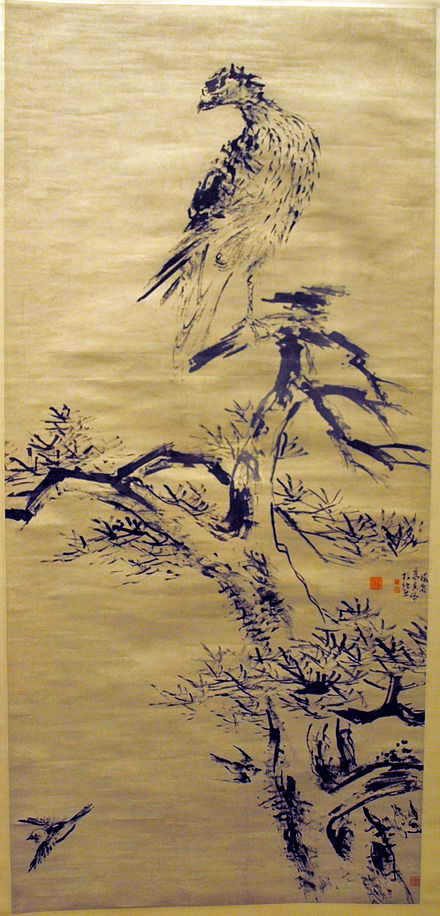
نقاشی یک هنر بصری است که با استفاده از رنگ ، رنگدانه ، رنگ یا سایر مواد بر روی یک سطح جامد (به نام "ماتریس" یا " حمایت ") مشخص می شود. این محیط معمولاً با یک برس روی پایه اعمال می شود، اما ابزارهای دیگری مانند چاقو، اسفنج و ایربرس ممکن است استفاده شود. به کسی که نقاشی می کشد نقاش می گویند .
در هنر ، اصطلاح "نقاشی" هم عمل و هم نتیجه عمل را توصیف می کند (اثر نهایی "یک نقاشی" نامیده می شود). تکیه گاه نقاشی ها شامل سطوحی مانند دیوار، کاغذ، بوم، چوب، شیشه، لاک ، سفال، برگ ، مس و بتن است و نقاشی ممکن است دارای چندین ماده دیگر از جمله ماسه، خاک رس ، کاغذ، گچ ، ورق طلا و ... باشد. حتی کل اشیاء
نقاشی شکل مهمی از هنر تجسمی است که عناصری مانند طراحی ، ترکیب بندی ، ژست ، روایت و انتزاع را به همراه دارد . نقاشی ها می توانند طبیعت گرایانه و بازنمایی (مانند طبیعت بی جان و نقاشی منظره )، عکاسی ، انتزاعی، روایی، نمادین (مانند هنر نمادگرایی )، احساسی (مانند اکسپرسیونیسم ) یا ماهیت سیاسی (مانند آرتیویسم ) باشند.
بخشی از تاریخ نقاشی در هنرهای شرقی و غربی تحت سلطه هنر مذهبی است . نمونه هایی از این نوع نقاشی از آثار هنری که چهره های اساطیری روی سفال را به تصویر می کشند تا صحنه های کتاب مقدس در سقف کلیسای سیستین تا صحنه هایی از زندگی بودا (یا سایر تصاویر با منشأ مذهبی شرقی ) را شامل می شود. ( مقاله کامل... )



.JPG/440px-CARRACCI,_Annibale_-_An_allegory_of_Truth_and_Time_(1584-5).JPG)
,_Retro.JPG/440px-Amore_e_Psiche,Canova_(1757-1822),_Retro.JPG)














.jpg/440px-US_Navy_040413-N-5328N-029_A_U.S._Air_Force_Airman_spray_paints_a_piece_of_equipment_in_a_paint_booth_at_Naval_Air_Technical_Training_Command_(NATTC).jpg)











.jpg/440px-École_des_beaux-arts_(from_the_live).jpg)

_-False_Dome.jpg/440px-Sant'Ignazio_(Rome)_-False_Dome.jpg)





آیا در مورد نقاشی سوالی دارید که پاسخ آن را پیدا نکنید؟
آن را در میز مرجع ویکیپدیا بپرسید .
برای منابع ویرایشگر و همکاری با سایر ویراستاران در بهبود مقالههای مربوط به نقاشی ویکیپدیا، به نقاشی ویکیپروژه مراجعه کنید .
پروژههای خواهر بنیاد ویکیمدیا زیر اطلاعات بیشتری در مورد این موضوع ارائه میدهند: